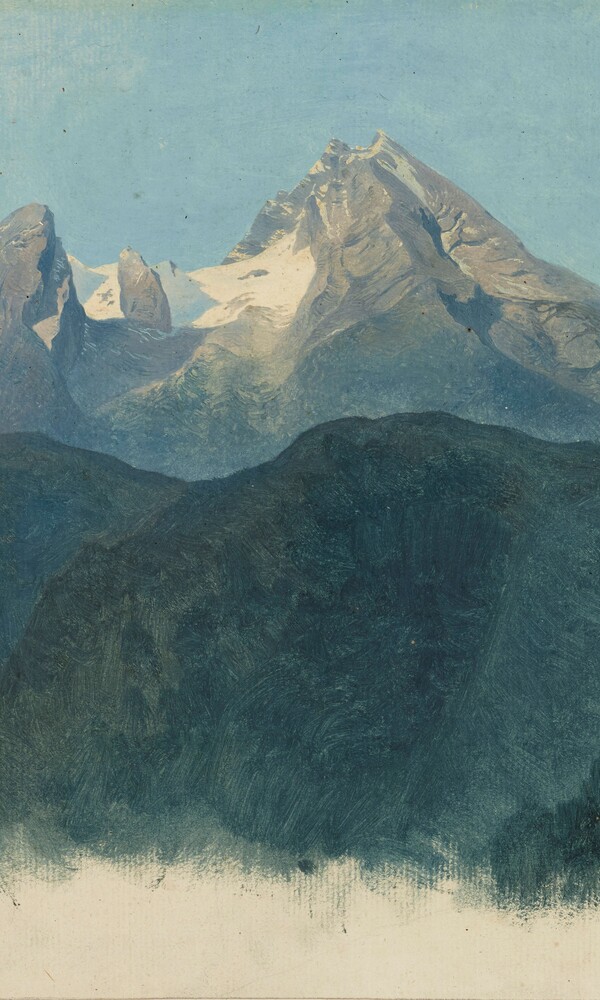In a show starting in December 2018, the Hamburger Kunsthalle together with the Klassik Stiftung Weimar is paying tribute to the multifaceted oeuvre of Heinrich Reinhold (1788–1825). This is the first large-scale retrospective on an artist who counts among the foremost German landscape painters of the nine-teenth century, one who set in motion with his work a sea change in the way his contemporaries looked at the landscape. Besides conveying a novel perception of nature, Reinhold’s art stands out due to its unconventional cropping and compositional refinement as well as his fragile, crystalline drawing technique. Based on around 120 works, the exhibition traces all phases of Reinhold’s career. On view is the full spectrum of his drawings and paintings, from painstaking nature studies, to city and harbour views, all the way to realistic landscape scenes. The Hamburger Kunsthalle holds the largest collection of Reinhold’s works anywhere, with 12 paintings and an extensive array of drawings. These are joined in the show by additional, in some cases never-before-seen, works from the Klassik Stiftung Weimar, which acquired in 2010 a significant share of the artist’s estate, as well as works on loan from institutions including the Belvedere in Vienna, the Prints and Drawings Collection of the Staatliche Museen zu Berlin and the Thorvaldsen Museum in Copenhagen. The ambitious exhibition project promises to inspire a reevaluation of Reinhold’s body of work.
Heinrich Reinhold’s pictures range from simple pen and pencil drawings to oil studies executed outdoors, a practice that made him a pioneer among German artists. A large share of his work was created in Rome and environs, in particular in Olevano on the Gulf of Naples and in Sicily. With his oil sketches, Reinhold succeeded in capturing the distinctive colour and light of southern climes, thus exercising a vital influence on the development of German art in the first third of the nineteenth century and beyond.
Born in Gera to a family of artists, Reinhold received at an early age drawing instruction from his father, the portrait painter Johann Friedrich Leberecht Reinhold, and from his half-brother, Friedrich Philipp. After studies in Dresden and Vienna, he moved to Paris in 1809 to take up work as an engraver. Upon returning to Vienna in 1814, he devoted himself to landscape painting, frequenting the same circles as Friedrich Olivier, Julius Schnorr von Carolsfeld and Joseph Anton Koch. Together with his brother and the painters Ernst Welker, Johann Adam Klein and Johann Christoph Erhard, Reinhold took study trips to the snow-covered mountains of the Salzkammergut and Berchtesgaden areas. The drawings executed during these rovings often served as templates for his paintings. From the year 1819 onwards, Reinhold lived in Rome, where he turned his attention to rendering the southern landscape. His oil studies were prized by well-known customers such as the architect and painter Karl Friedrich Schinkel, who acquired several works by Reinhold. The artist passed away in 1825 at the young age of 36, a victim of tuberculosis.
This exhibition adds another chapter to the trilogy at the Hamburger Kunsthalle dedicated to European landscape painters during Goethe’s era, which began with Jakob Philipp Hackert (1737–1807) in 2008/09 and went on to present Johann Christian Reinhart (1761–1847) in 2012/13 and Franz Ludwig Catel (1778–1856) in 2015/16.
In cooperation with: Klassik Stiftung Weimar
Sponsored by: Hubertus Wald Stiftung, Wolfgang Ratjen Stiftung, Ministry of Culture and Media Free and Hanseatic City of Hamburg
Culture Partner: NDR Kultur
